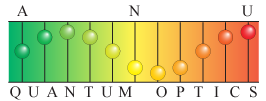Graphene is undoubtedly the most famous of 2D materials, but it far from the only one. There are many other materials that have interesting properties when we are able to produce atomically thin layers.
Our primary interest in 2D materials is as a source for single photons. Hexagonal boron nitride (h-BN), for example, can be mechanically exfoliated into 2D layers. Defects within this material have been shown to act as a good source of single photons, even at room temperature. This makes them a good choice for applications where cryostatic cooling is hard, such as in satellite-based systems.
Other 2D materials that we are investigating include molybdenum disulphide and phosphorene.
 Full process cycle for h-BN quantum emitter fabrication. The left column shows the processes introduced, and the right column shows the characterization and selection of samples.
Full process cycle for h-BN quantum emitter fabrication. The left column shows the processes introduced, and the right column shows the characterization and selection of samples.
Selected Publications:
Radiation tolerance of two-dimensional material-based devices for space applications
Tobias Vogl, Kabilan Sripathy, Ankur Sharma, Prithvi Reddy, James Sullivan, Joshua R. Machacek, Linglong Zhang, Fouad Karouta, Ben C. Buchler, Marcus W. Doherty, Yuerui Lu & Ping Koy Lam
Nature Communications 10, 1202 (2019)
Fabrication and deterministic transfer of high-quality quantum emitters in hexagonal boron nitride
T Vogl, G Campbell, BC Buchler, Y Lu, PK Lam
ACS Photonics 5, 2305-2312 (2018)
Room temperature single photon source using fiber-integrated hexagonal boron nitride
Tobias Vogl, Yuerui Lu and Ping Koy Lam
Journal of Physics D: Applied Physics 50, 295101 (2017)
